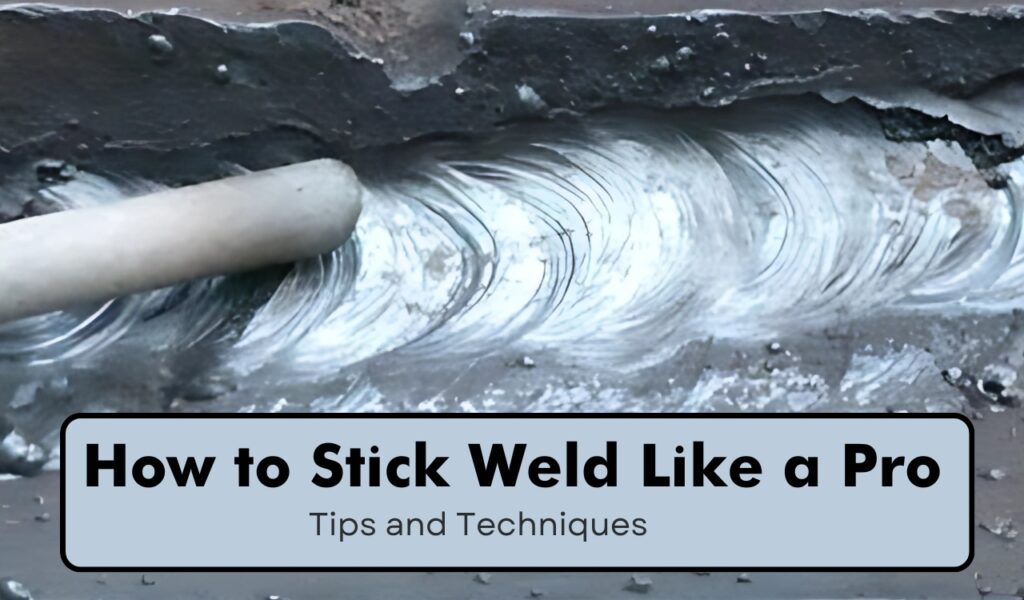Stick welding isn’t the most challenging type of welding to master, but it can still be challenging at times. It takes expertise to get an arc to ignite on the first try, and not everyone is capable of it. Stick welding is more complicated than just starting an arc, so if you want to get better at welding, follow these pointers.
1. Current Settings
The current settings consist of two components: amperage and polarity. The good news is that, since the electrode’s packaging lists the proper settings for both of them, obtaining them is not too difficult.
For instance, the recommended polarity of the HYPERARC 6013 General Purpose electrodes is AC & DC+, and their suggested current range is 90A to 130A (for the 3.2mm size).
For both, why are there multiple options? Since the 6013 GP electrodes are more adaptable, they will weld both AC and DC+; which one you choose depends more on your preferences. Many electrodes only have a single suggested polarity setting.
Each electrode will have a range in terms of amperage; it will function without any issues within that range, though you might need to move more quickly toward the higher end if the metal of your workpiece is thinner, or you’ll prefer the lower end.
2. Arc Length
Maintaining an arc after it has begun is crucial. Maintaining a constant distance between your electrode and the plate is the greatest method for maintaining a continuous (and lit) arc. Generally speaking, a decent arc is produced by holding it around 3 mm away from the workpiece.
You will lower your voltage and adhere your electrode to the workpiece if your arc becomes too brief. An excessively lengthy arc will result in increased voltage, a wider puddle, more splatter, the metal spraying because the arc isn’t concentrated, arc extinguishment, and undercutting.
3. Drag Your Weld
Stick welds should always be pulled (or dragged). Attempting to push your electrode will just trap the protective slag inside the weld pool, where it will be negatively impacted. Instead, it will contaminate your weld.
Running a vertical up weld is the sole situation in which the drag rule does not apply. Stick welding should only ever be done when pushing your weld up a joint.
4. Visibility
The ability to see what you’re doing is crucial, just like with any type of welding. If you can’t see, how are you going to watch your arc distance or run your bead in a straight line?
Make sure you’re positioned comfortably so you can observe what’s going on. Keep your helmet and face away from the fumes as well. They are dangerous to breathe in in addition to reducing the visibility of your weld.
5. Clean, Clean, Clean
In terms of cleanliness, is stick welding the most forgiving? Indeed. Is it possible to simply use it to weld over a few millimeters of rust? No.
Stick welding has significant limitations, while being the most adaptable method when it comes to surface contamination. Spend a few more minutes using a wire brush or a grinder to clean your metal, since this will result in the best possible weld. It’s okay if you can’t get everything off, but if that’s the case, reduce your speed. The gas bubbles will have more time to boil off before the slag formed if you move more slowly.
6. Wet Is Bad
Although electrodes often have some moisture, too much moisture or an entirely wet electrode is undesirable. Moisture in your electrodes is a no-no if you’re utilizing a low hydrogen electrode.Your electrode is probably not dry if your arc is irregular, wandering, or scratchy. Additionally, your flux will chip off and wind up in the unmelted weld pool, resulting in weld flaws.This can be fixed in two ways.
First, preventive. To ensure that your electrodes stay dry, store them in a dry location, ideally sealed.
7. Movement
It’s fairly easy to run a bead with your stick electrode; it’s a straight, steady line. You don’t want to be looping around the back of the weld pool and trapping slag inside, which is another reason why you only want to drag a weld.
Make a second, third, or as many passes are necessary to fill your weld joint if it is too wide for a single bead. In order to fuse the base metal and filler together, these will all be straight lines with a 50/50 overlap.
8. Speed
Consistent travel speed is a positive thing. Additionally, it doesn’t melt your bead into the metal or burn through your plate, leaving it atop it. How can you determine if you’re moving too quickly or too slowly?
A narrow, high bead that appears to be sitting above the metal will result from moving too quickly. The reason for this is that there was not time to heat the electrode and workpiece sufficiently for it to melt in.
For many welders, stick welding (SMAW), one of the earliest types of electric arc welding, is their first exposure to welding. It’s a challenging technique that requires a lot of practice to master.


